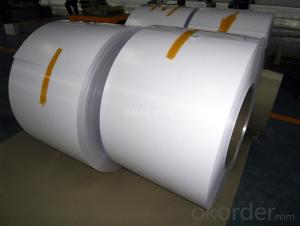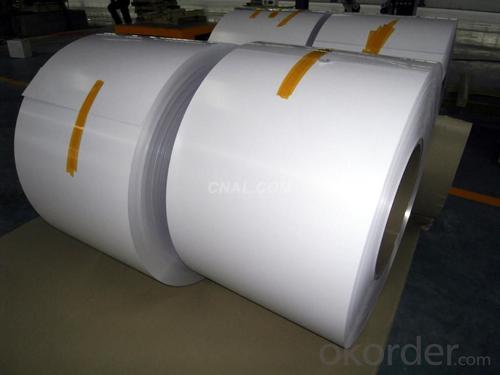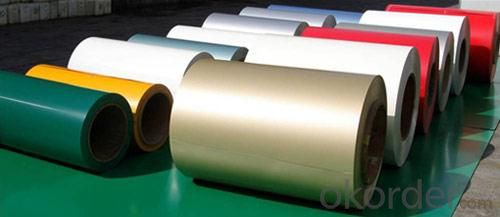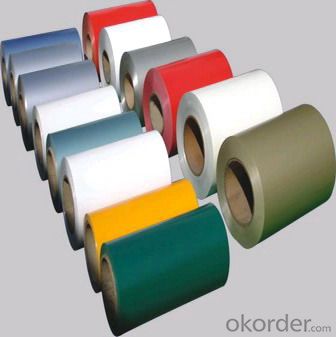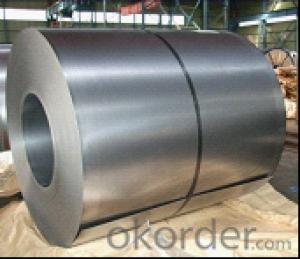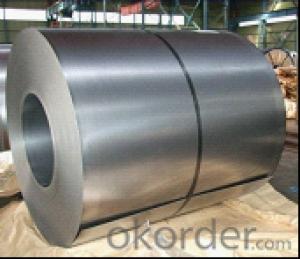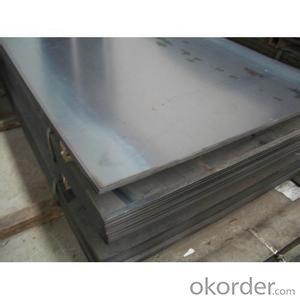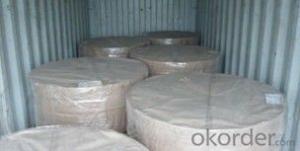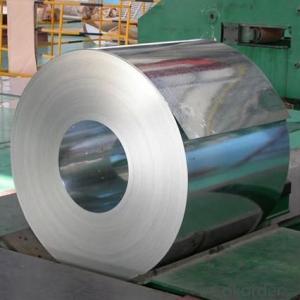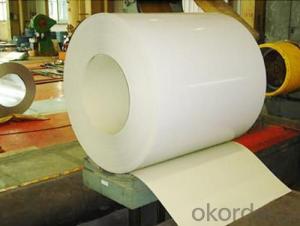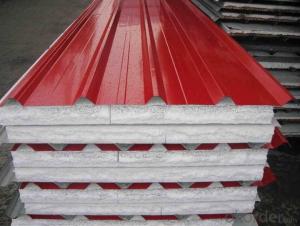Prepainted Steel Coil in Good Condition
- Loading Port:
- Tianjin
- Payment Terms:
- TT or LC
- Min Order Qty:
- 3 m.t.
- Supply Capability:
- 300 m.t./month
OKorder Service Pledge
OKorder Financial Service
You Might Also Like
Size
1)0.6-1.2mm Steel 3004
2)5.53-19.85usd/m
3)ASTM;JIS standard
4)usde for roof/wall
5)industrial ral color aluminum sheet
Description
1 Advantage of standing seam metal roofing
(1)-Easy installation
(2)-High strength
(3)-Low in costs
(4)-Durable
(5)-Nice appearance
(6)-Anti oxidation
2 Raw materials of standing seam metal roofing
(1)-Aluminum sheet
(2) Prepainted aluminum sheet
(3)-Pre painted galvanized steel sheet
(4)-Galvalume steel sheet
(5)-Pre painted galvalume steel sheet
(6)- Hot dipped galvanized steel sheet
3. Color of standing seam metal roofing
(1) Normal color-Ocean blue (RAL5002); Grey white (RAL 9002)
(2) Popular color -Bright red
(3) Special color-Any other colors you request
4 Paint of standing seam metal roofing
(1) Face paint name -PE; HDP; SMP; PVDF
(2) Face paint detail-Two layers; 20-25um
(3) Back paint name-PE grey white color
(4) Back paint detail-One layer 5-7um
5 Technical of standing seam metal roofing
(1) Forming type-Cold form
(2) machine-Rolling form machine
Applications
(1)-Roof
(2)-Wall
(3)-Ceiling
(4)-Fence
Loading of standing seam metal roofing
(1)20GP size-5.85M (L)*2.23M (W)*2.258M (H)
(2) 40GP size-11.8M (L)*2.23M (W)*2.258M (H)
(3) Chose 1-Max length ≥ 5800mm; we use 20GP
(4) Chose 2-Max length ≤ 5800mm; we use 40GP
(5) Introduction of 20ft container
Standard and certificate of standing seam metal roofing
(1) standard-GB/T 12755-2008; ASTM; JIS
(2) certificate-ISO9001-2008

- Q: Are steel sheets heat resistant?
- Yes, steel sheets are heat resistant. They have a high melting point and can withstand significant levels of heat without deforming or losing their structural integrity.
- Q: What are the different sizes of steel sheets available?
- Various sizes of steel sheets are readily available to cater to a range of applications and industries. The dimensions of steel sheets can vary depending on factors such as thickness, width, and length. In terms of thickness, steel sheets are commonly found in gauges ranging from 7 to 30. The gauge number indicates the thickness, with higher numbers representing thinner sheets. Thinner sheets, like those with a gauge of 30, are often used for flexible applications. On the other hand, thicker sheets, like those with a gauge of 7, are typically employed for heavy-duty applications that require strength and durability. When it comes to width, steel sheets are offered in a variety of choices. The most frequently seen widths include 36 inches, 48 inches, and 60 inches. Customized widths can also be obtained to meet specific requirements. Regarding length, standard lengths for steel sheets are typically 96 inches and 120 inches. These lengths are widely used in various industries. However, similar to width, length can also be customized to suit specific needs. It is important to note that the availability of different sizes of steel sheets may vary depending on the supplier and the specific grade of steel used. It is advisable to consult with a steel sheet supplier or manufacturer to determine the exact sizes available for a particular application.
- Q: What is the typical weight of steel sheets?
- Steel sheets come in a variety of sizes, thicknesses, and types, so their typical weights can differ. In general, the weight of steel sheets can range from a few pounds to several tons. For instance, a regular 4x8 foot steel sheet that is 1/4 inch thick weighs approximately 110 pounds, while a larger 10x10 foot sheet that is 1 inch thick can weigh over 1,000 pounds. It should be noted that these estimates are only rough guidelines, and the weight can vary depending on specific factors like the alloy composition or any coatings applied to the sheets.
- Q: What are the different color options available for steel sheets?
- Depending on specific requirements and preferences, steel sheets can come in a variety of colors. Some commonly available color options for steel sheets are as follows: 1. Natural Steel: The steel sheets retain their natural silver-grey color without any additional coating or treatment. 2. Galvanized Steel: The steel sheets undergo a galvanization process, where a protective zinc coating is applied. This results in a shiny silver color and provides improved corrosion resistance. 3. Coated Steel: Steel sheets can be coated with various materials, such as polyester, silicone polyester, PVDF, or plastic film coatings. These coatings offer a wide range of colors, including white, red, blue, green, and more. They not only provide different colors but also offer additional protection. 4. Painted Steel: Steel sheets can be painted using different types of paint, including epoxy, polyurethane, or acrylic. This allows for a vast array of color options, including standard colors like black, grey, and white, as well as custom colors tailored to specific requirements. It's important to note that the availability of different color options may vary depending on the supplier and the intended application of the steel sheets. Additionally, different color options may also offer different performance characteristics, such as enhanced UV radiation resistance or improved durability.
- Q: Are the steel sheets available in different grades?
- Yes, steel sheets are available in different grades.
- Q: Can steel sheets be used in food processing or medical industries?
- Yes, steel sheets can be used in food processing and medical industries. Stainless steel sheets, in particular, are commonly used due to their excellent resistance to corrosion, hygiene properties, and durability. They meet the strict requirements of these industries, ensuring safe and sanitary processing environments.
- Q: What is a cold rolled sheet with plastic sprayed?
- First, cold rolled steel sheet:Cold rolled steel plate is cold-rolled steel plate, commonly known as cold plate. Cold rolling is a steel plate that is further rolled to the target thickness at room temperature. Compared with hot rolled steel sheets, cold-rolled steel sheets are more accurate, smooth and beautiful in appearance and superior in mechanical properties, especially in terms of machinability. The minimum thickness of cold rolling is below 0.1--8.0MM, and the minimum thickness and width are determined by the equipment capacity and market demand of each plant.
- Q: What is the maximum size available for steel sheets?
- The maximum size available for steel sheets can vary depending on the manufacturer and specific requirements, but commonly available sizes range from 4 feet by 8 feet (1.2 meters by 2.4 meters) to 6 feet by 20 feet (1.8 meters by 6.1 meters).
- Q: How are steel sheets cleaned and maintained?
- Steel sheets can be cleaned and maintained using various methods depending on the specific requirements and conditions. Here are some common practices to clean and maintain steel sheets: 1. Regular cleaning: Steel sheets should be cleaned regularly to remove dust, dirt, and other debris that may accumulate on the surface. This can be done using a soft cloth or sponge with mild soap or detergent and warm water. Avoid using abrasive cleaners or scrub brushes that can scratch the surface. 2. Rust removal: If rust spots appear on the steel sheets, they should be promptly removed to prevent further corrosion. Rust can be removed using a wire brush, sandpaper, or a rust remover solution. Afterward, the area should be thoroughly cleaned and dried. 3. Protective coating: Applying a protective coating can help prevent rust and corrosion, especially for steel sheets exposed to harsh environments or moisture. This can be done using paint, varnish, or a specialized anti-corrosion coating. The coating should be applied according to the manufacturer's instructions and reapplied periodically as needed. 4. Proper storage: Steel sheets should be stored in a dry and well-ventilated area to prevent moisture buildup and corrosion. They should be kept away from direct contact with the ground and other metals to avoid galvanic corrosion. Additionally, using covers or protective wraps can further safeguard the sheets from dust and other contaminants. 5. Periodic inspection: Regularly inspecting steel sheets for any signs of damage, such as dents, scratches, or cracks, is essential. If any damage is found, it should be repaired promptly to prevent further deterioration. 6. Professional maintenance: For large-scale or complex steel sheet installations, it may be necessary to hire professional maintenance services. These experts have the knowledge, tools, and experience to handle more extensive cleaning, maintenance, and repairs. By following these cleaning and maintenance practices, steel sheets can maintain their integrity, appearance, and performance over time.
- Q: Are steel sheets suitable for oil rig platforms?
- Yes, steel sheets are suitable for oil rig platforms. Steel is widely used in the construction of oil rig platforms due to its exceptional strength and durability. Oil rig platforms are subjected to harsh environmental conditions, such as extreme temperatures, high winds, and corrosive saltwater, and steel has proven to be able to withstand these conditions effectively. Steel sheets provide a strong and stable foundation for the oil rig platforms, ensuring that they can support the weight of the rig, equipment, and personnel. The high strength of steel allows for the construction of large and complex structures while maintaining stability and safety. Furthermore, steel is highly resistant to corrosion, making it an ideal material for offshore applications. The oil rig platforms are constantly exposed to saltwater, which can cause corrosion and weaken other materials. Steel sheets, however, can be specially treated with protective coatings to enhance their resistance to corrosion and extend their lifespan. In addition to its strength and corrosion resistance, steel is also a versatile material that can be easily shaped and fabricated into various components required for oil rig platforms. This flexibility allows for efficient and cost-effective construction processes, reducing both time and resources required for installation and maintenance. Overall, steel sheets are a suitable choice for oil rig platforms due to their strength, durability, corrosion resistance, and versatility. They provide a reliable and robust foundation for offshore drilling operations, ensuring the safety and longevity of the platform in challenging environments.
Send your message to us
Prepainted Steel Coil in Good Condition
- Loading Port:
- Tianjin
- Payment Terms:
- TT or LC
- Min Order Qty:
- 3 m.t.
- Supply Capability:
- 300 m.t./month
OKorder Service Pledge
OKorder Financial Service
Similar products
Hot products
Hot Searches
Related keywords
